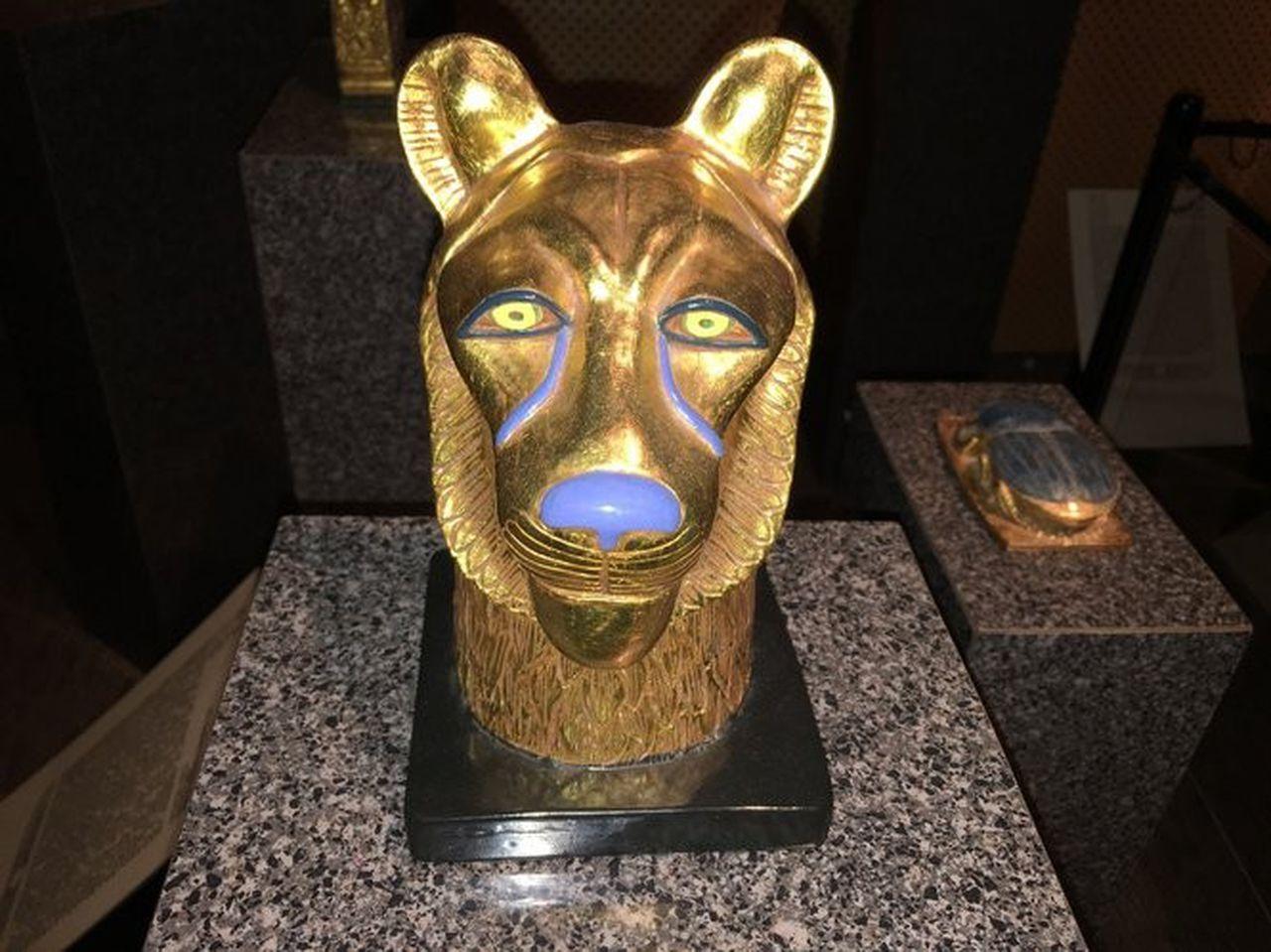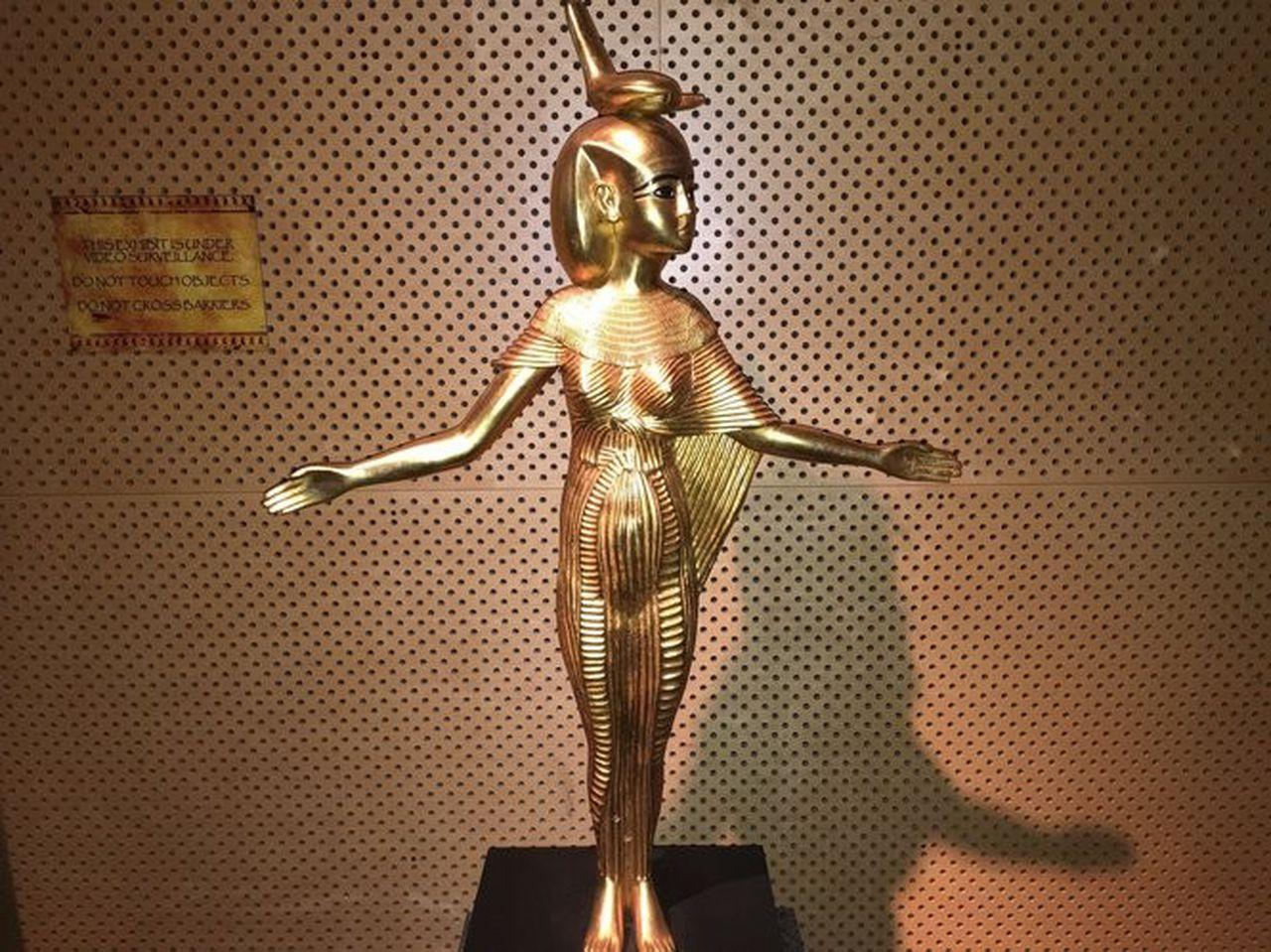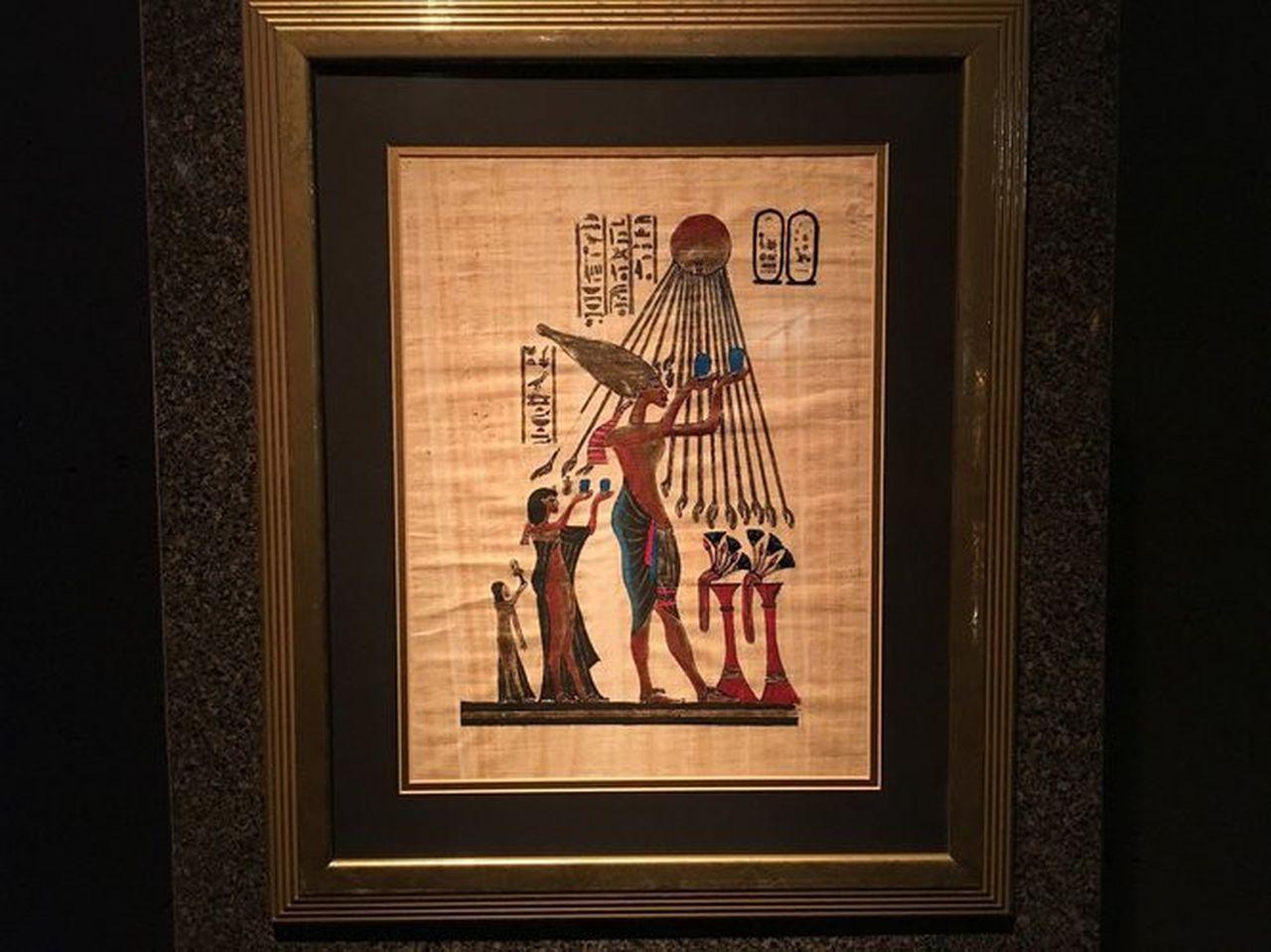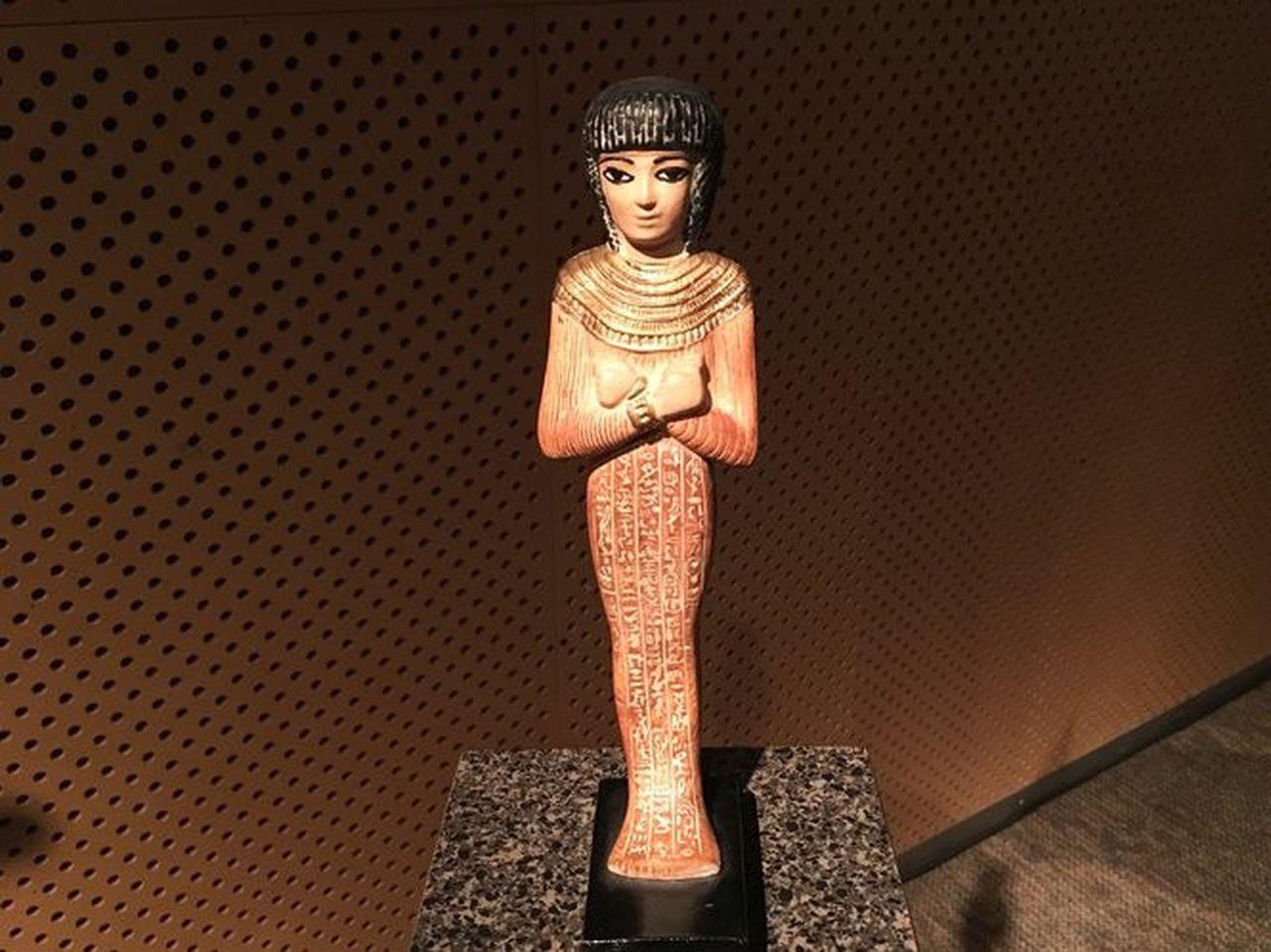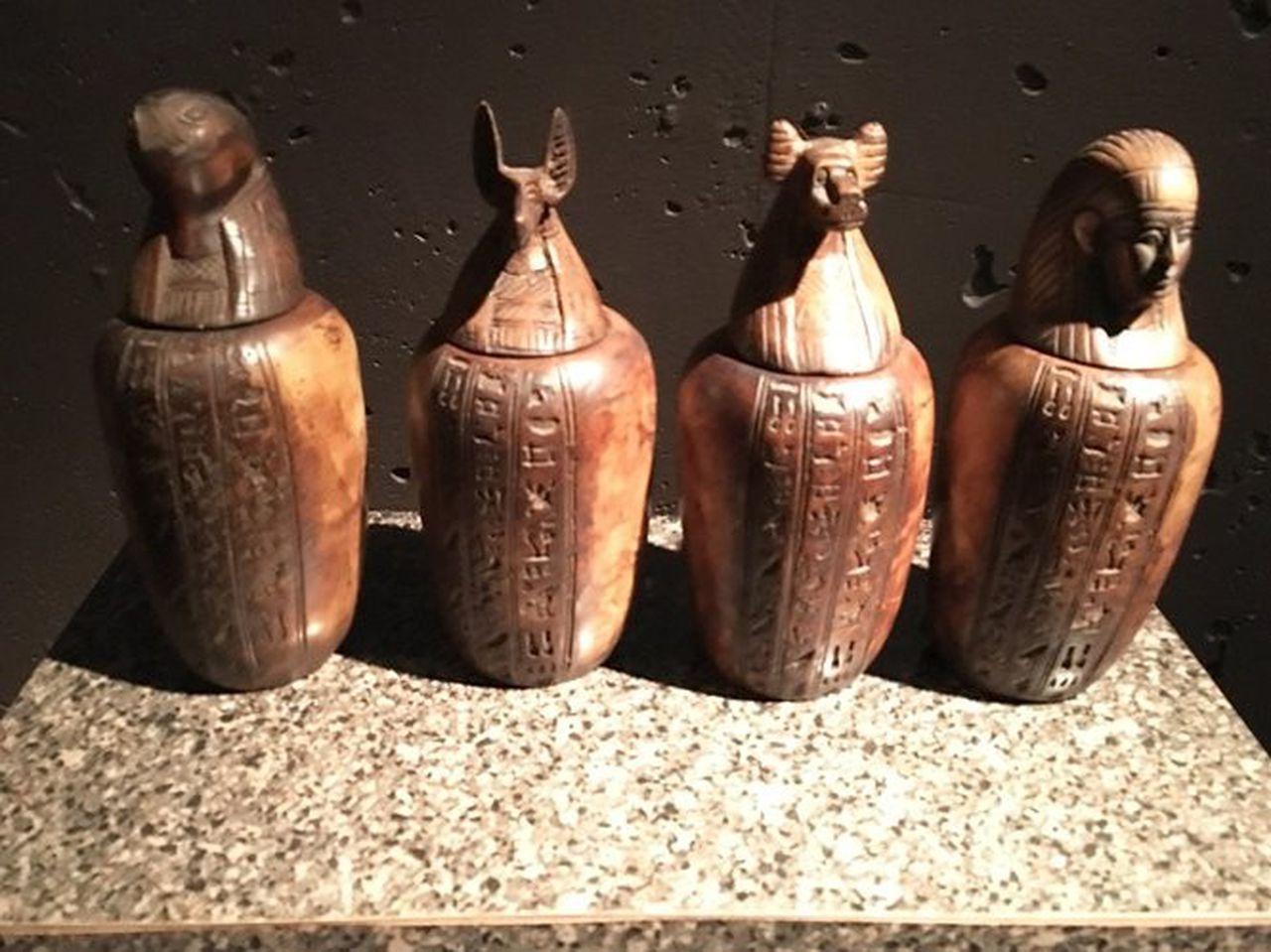
“MLive Edward Powers Photobook”
“MLive Edward Powers Story”
“Now you can go back in time to the 18th Dynasty of ancient Egypt (c. 1543-1292) and see King Tut and the pharaoh’s sacred possessions. Scroll down to see a sample of Cranbrook’s new exhibition, now open until September 3, 2017.”
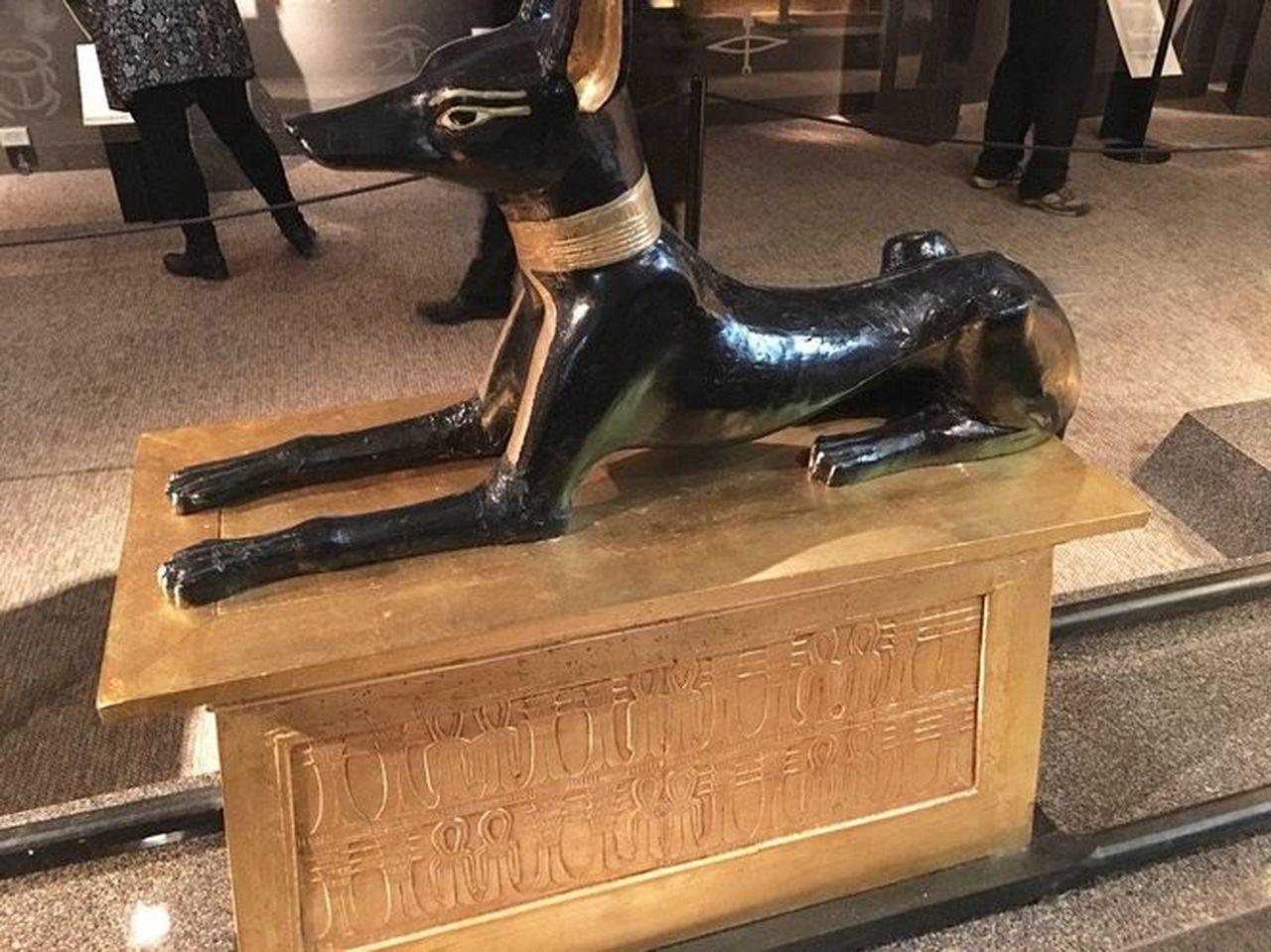
“More than 100 treasures”
“The exhibit features 131 replicas of the pharaoh’s sacred possessions and artifacts. “These are very detailed and exact replicas of the original items, which will no longer leave Egypt.”
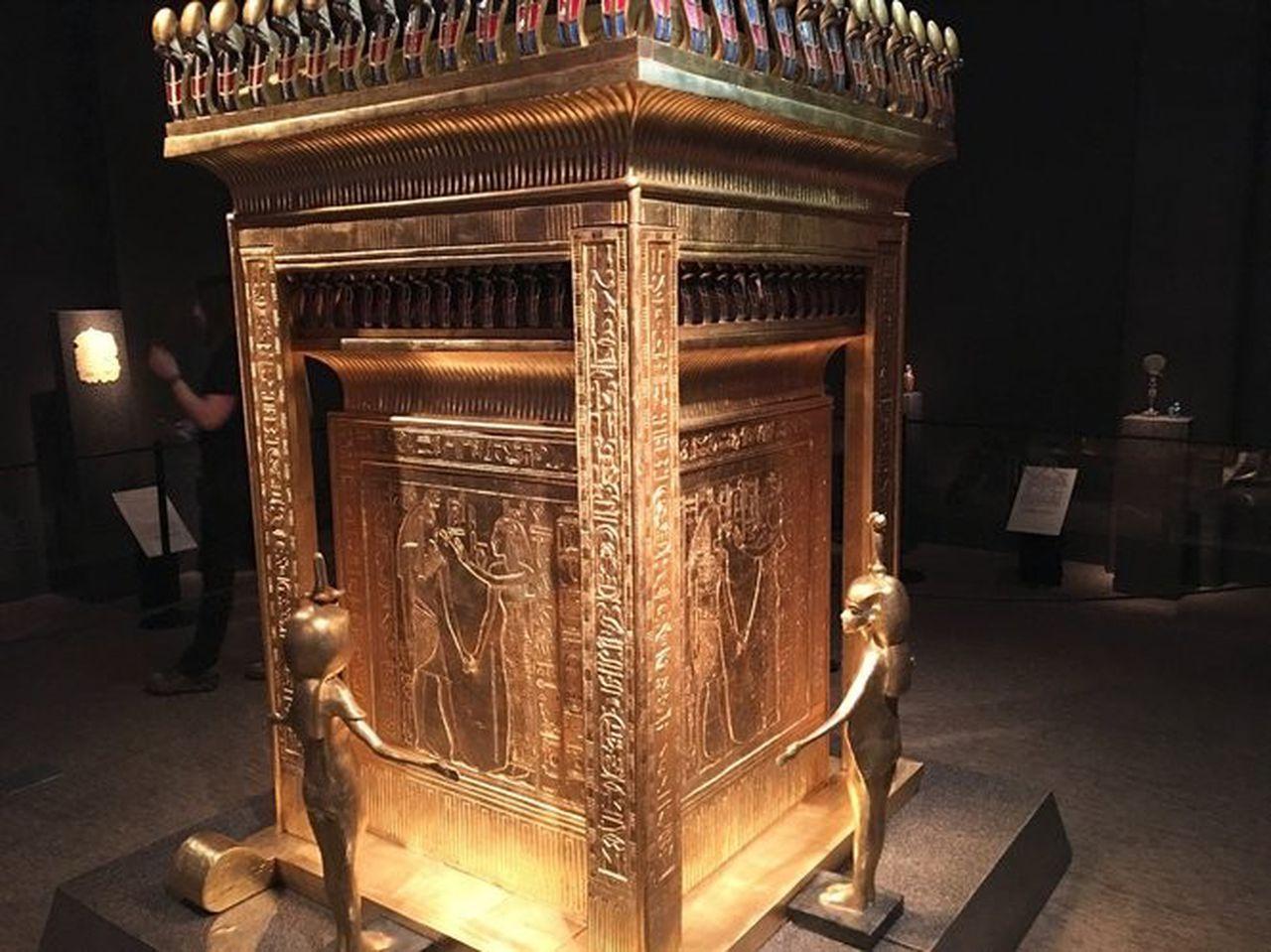
“Ticket information
Tickets are $10 for non-Cranbrook Institute of Science members and $9 for members. Children from 2 to 12 years old pay $8.”

“The best of Tut on a lotus – 18th Dynasty”
This portrait captures Tut’s elongated pharaonic skull, a common feature among members of the endogamous Amarna royal family.
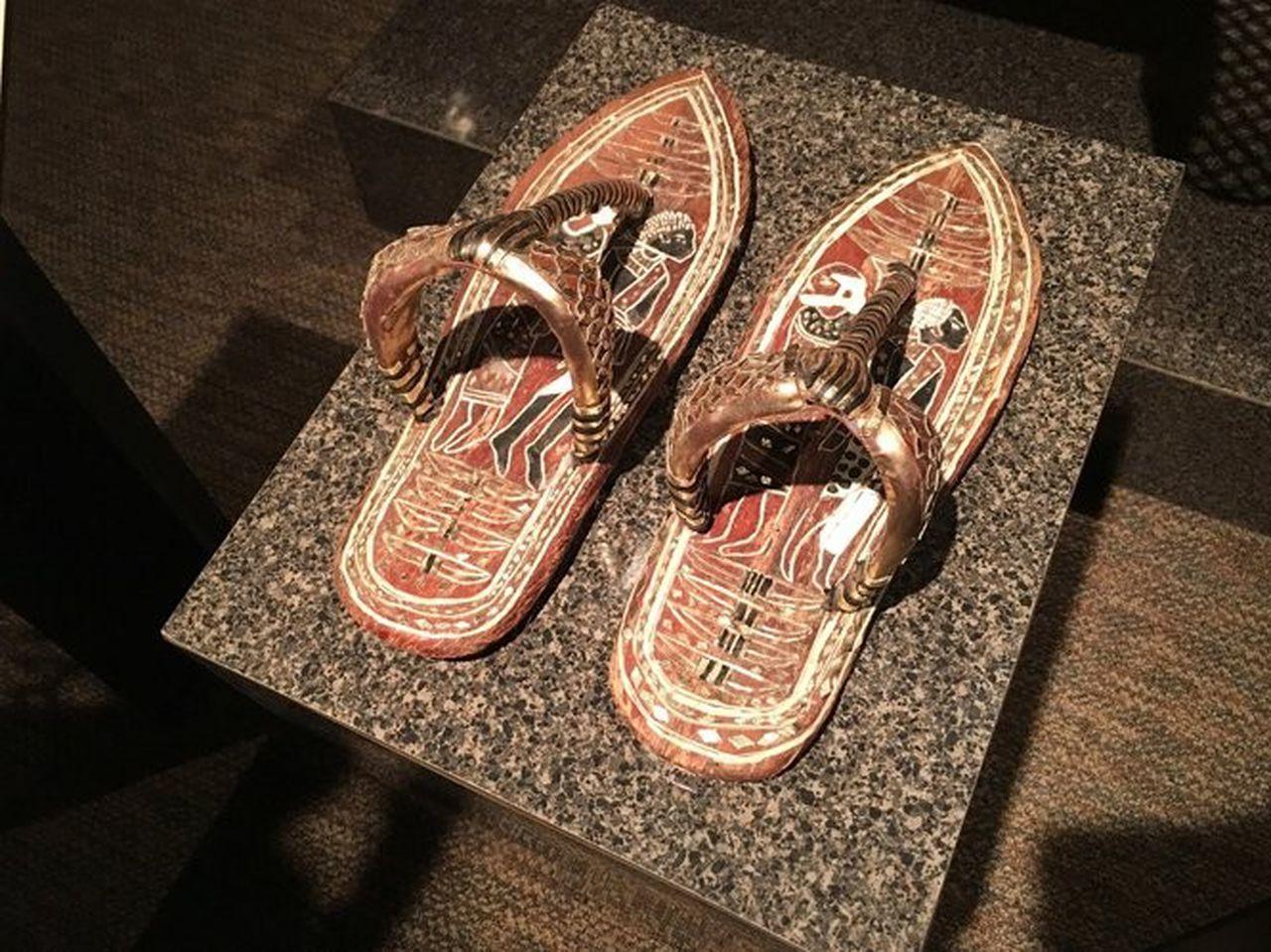
“Patio sandals – 18th Dynasty”
Made from papyrus fiber, leather, wood and gold leaf, some 93 items of footwear were buried with Tut. The best example is this pair of sandals found in the Antechamber, placed inside the painted chest. Made of wood with an ornate marquetry covering, the soles are decorated with traditional images of captive African and Asian enemies, symbolically trampled at every step of the pharaoh.
The original sandals can be found in the Cairo Museum.
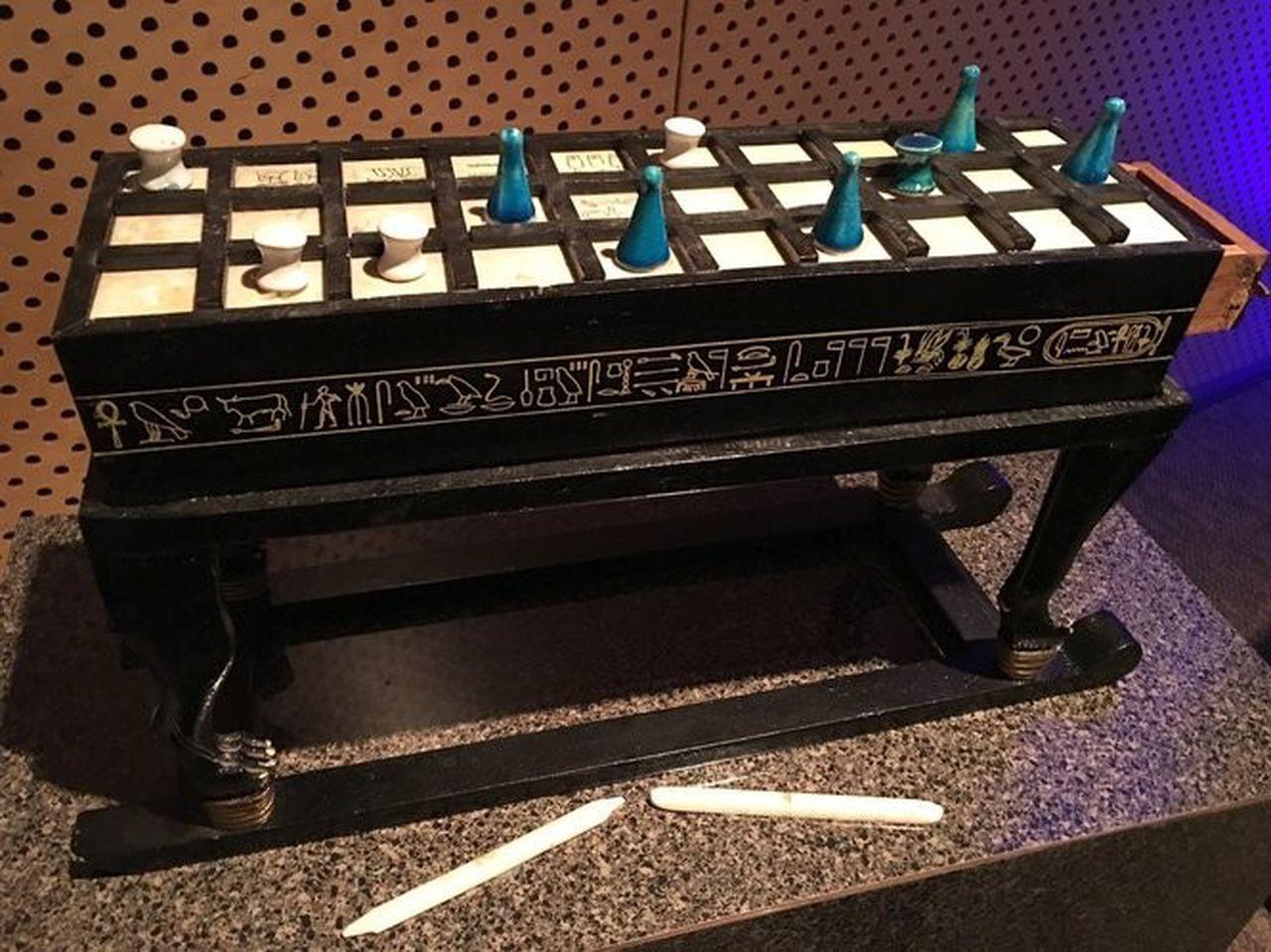
“Game box and cast ebony sticks – 18th Dynasty”
One of Tutankhamun’s favorite pastimes was playing games of chance. Like many ancient Egyptians, he enjoyed the game of “senet,” in which the movement of pawns on a chessboard was determined by the throwing of knuckles or throwing sticks. Of the four game boxes in the annex, this one, made of ebony and ivory veneer, was the finest.
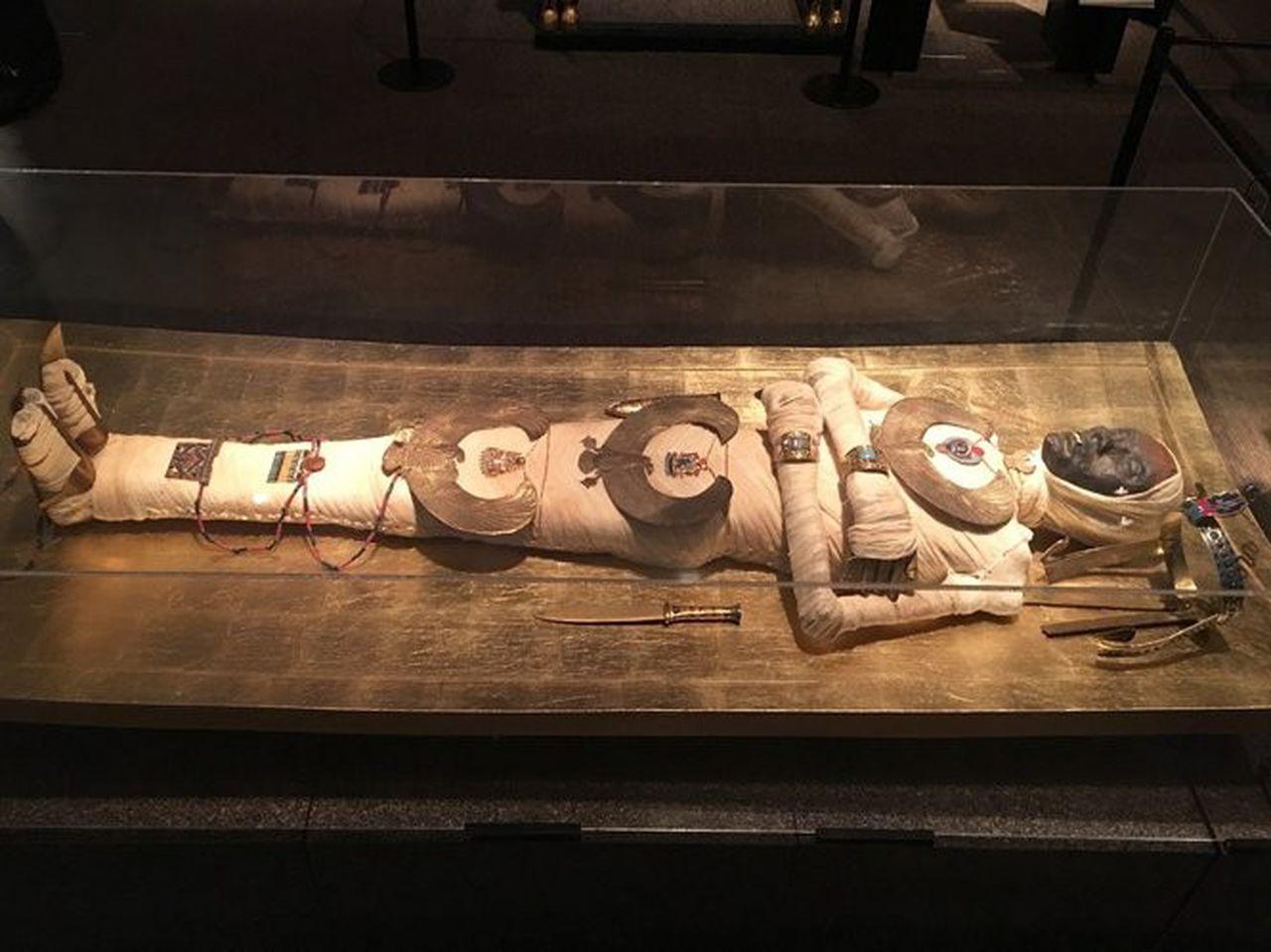
“Royal mummy of Pharaoh Tutankhamun and funerary coffin”
The long-awaited opening of the third coffin, delayed by the sudden death of Lord Carnarvon, revealed the pharaoh’s mummy, which measured 5 feet 4 inches long.
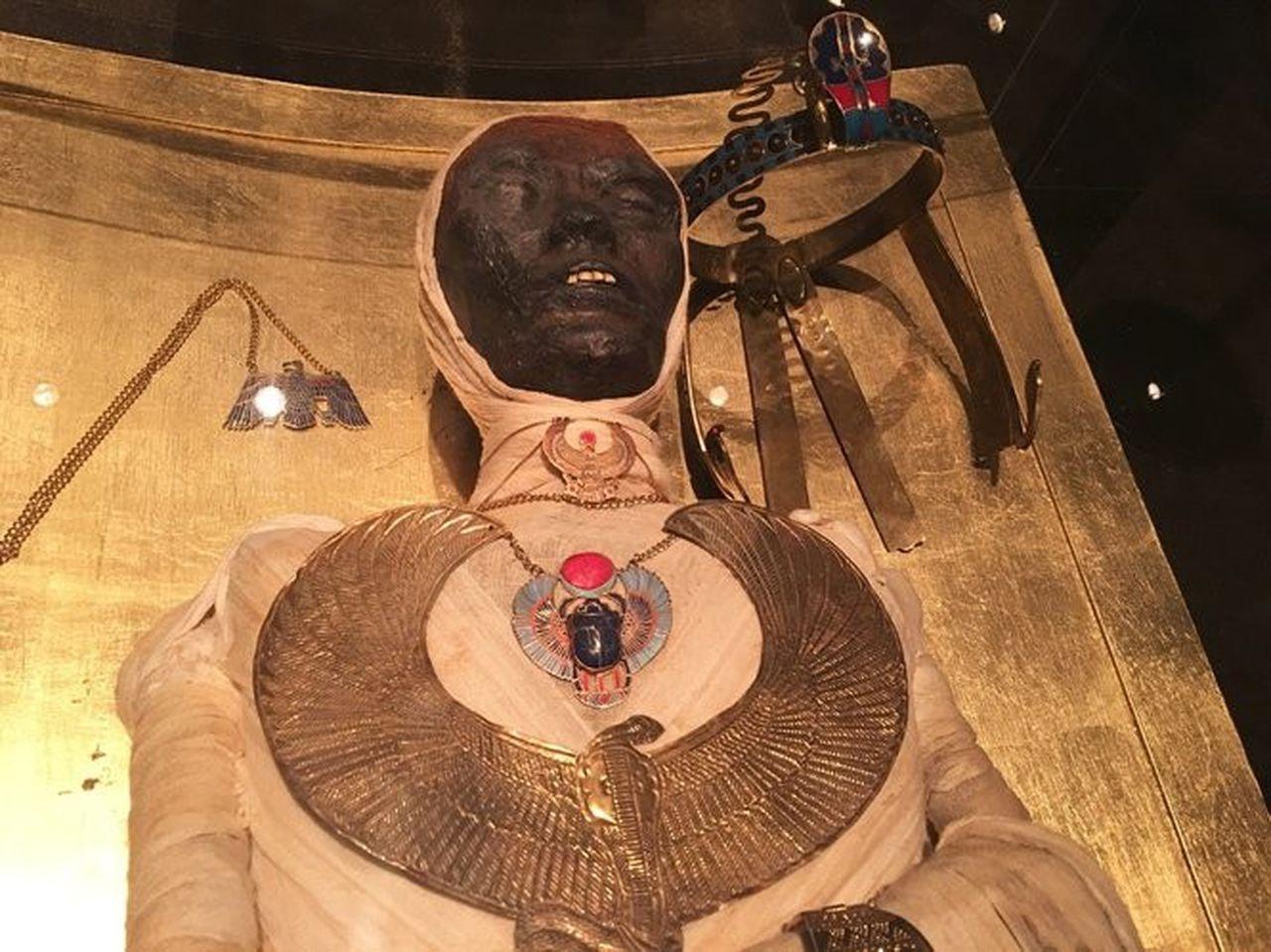
“Wrapped in linen bandages adorned with more than 150 carefully placed amulets and sacred jewels, anointed with consecrated ointments, his body had been severely damaged. “Its brittle tissue was hardened by the excessive application of the same resins intended to preserve it.”

“His face, protected by the golden mask, suffered the slightest damage. Around her head was a royal diadem of gold inlaid with cloisonné and semi-precious stones. His fingers and toes were individually covered with plain gold sheaths, and his feet were fitted with a pair of ornamental sandals made of gold.”
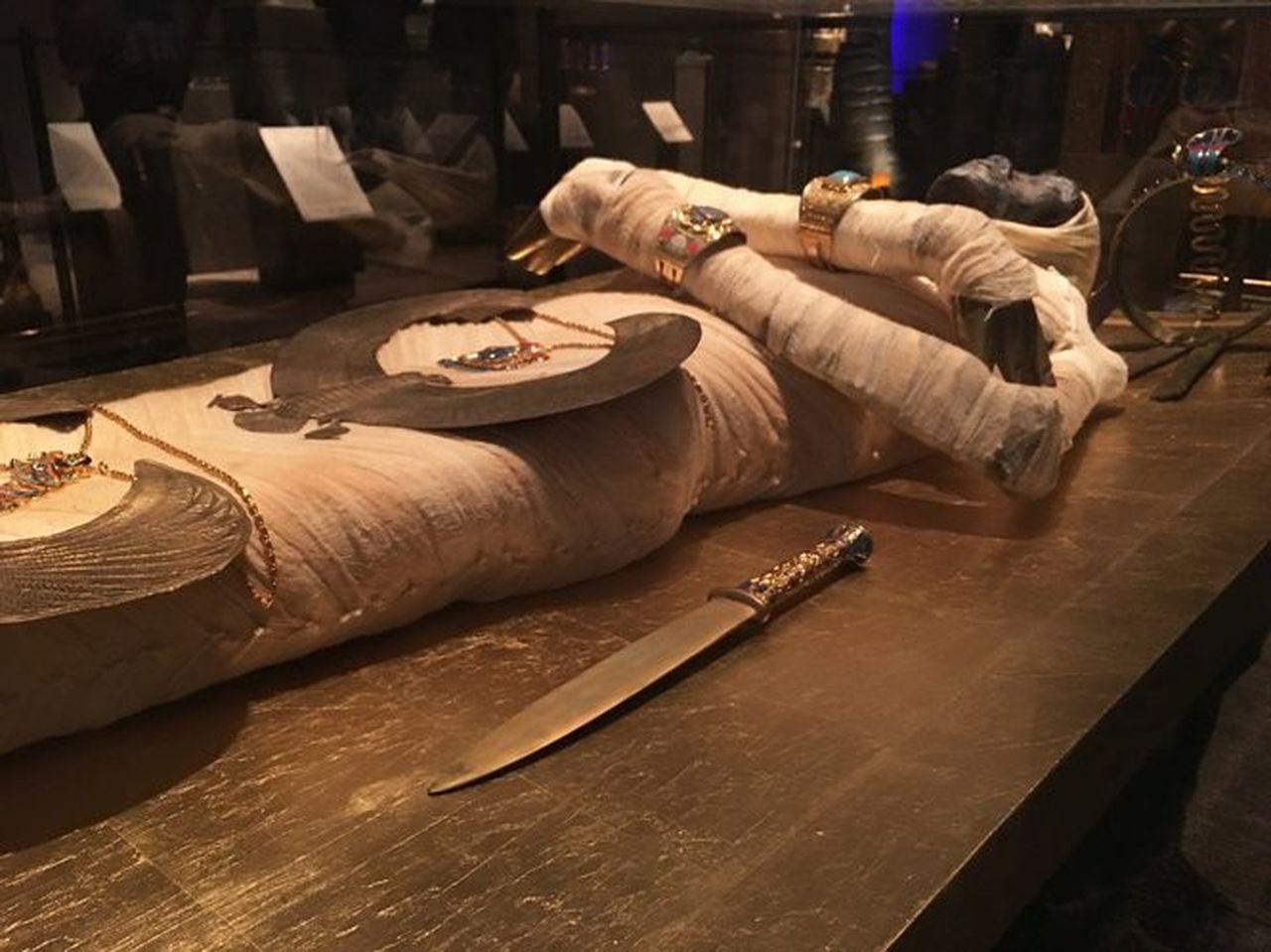
“As the priceless treasures were removed from Tut’s person, the fragile remains of the pharaoh were sensibly tormented into pieces. A second examination of the mummy in 1968 revealed possible evidence of a fatal blow to the skull behind the left ear.”
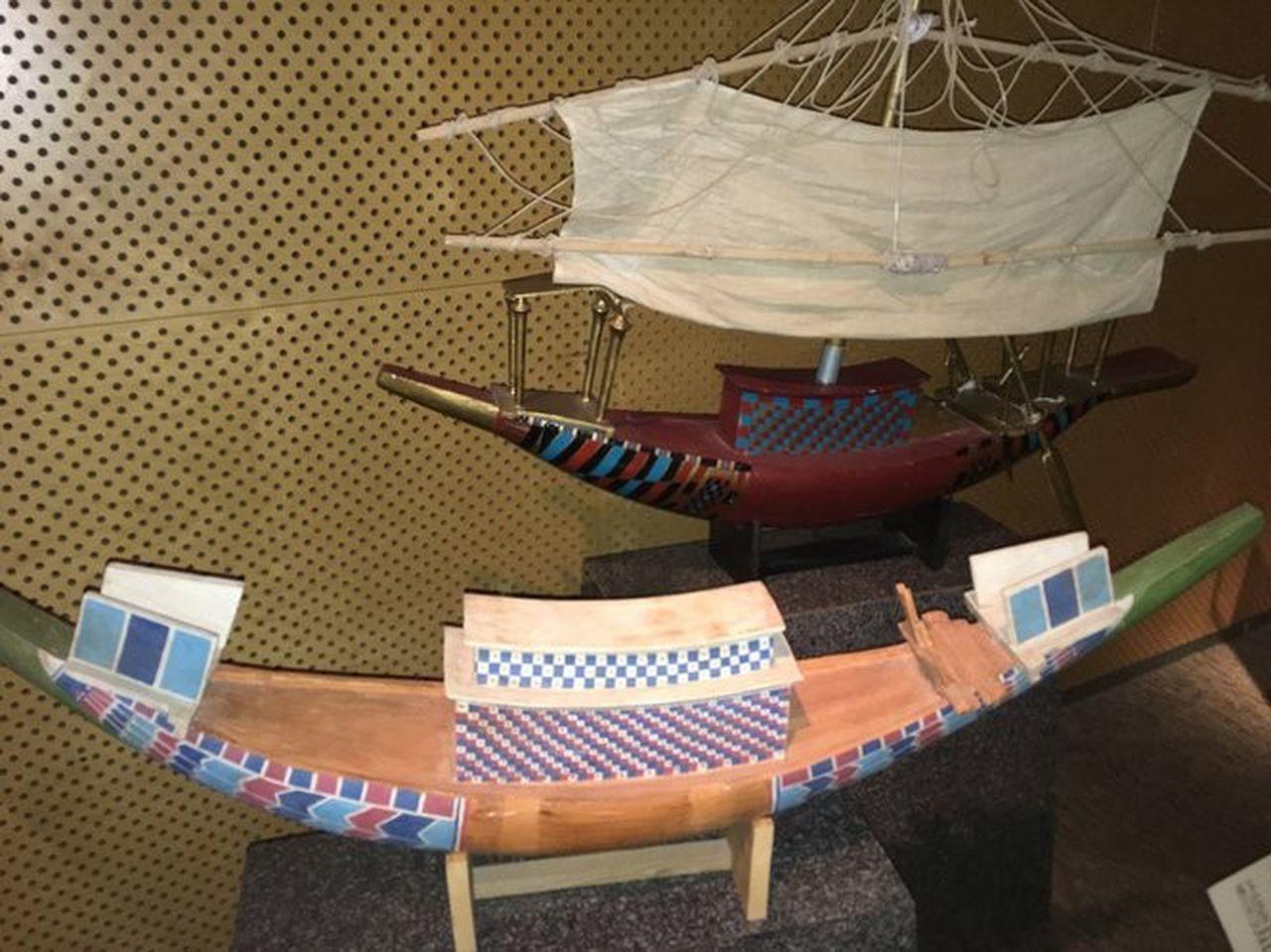
“Royal Sailboat – 18th Dynasty”
Typical of royal burials, the pharaoh’s tomb included a fleet of 35 ship models associated with his mystical pilgrimage to the afterlife and representative of both practical and ceremonial vessels. The sailing ship appears to be a funerary model of the majestic vessel that carried the pharaoh up and down the Nile.”
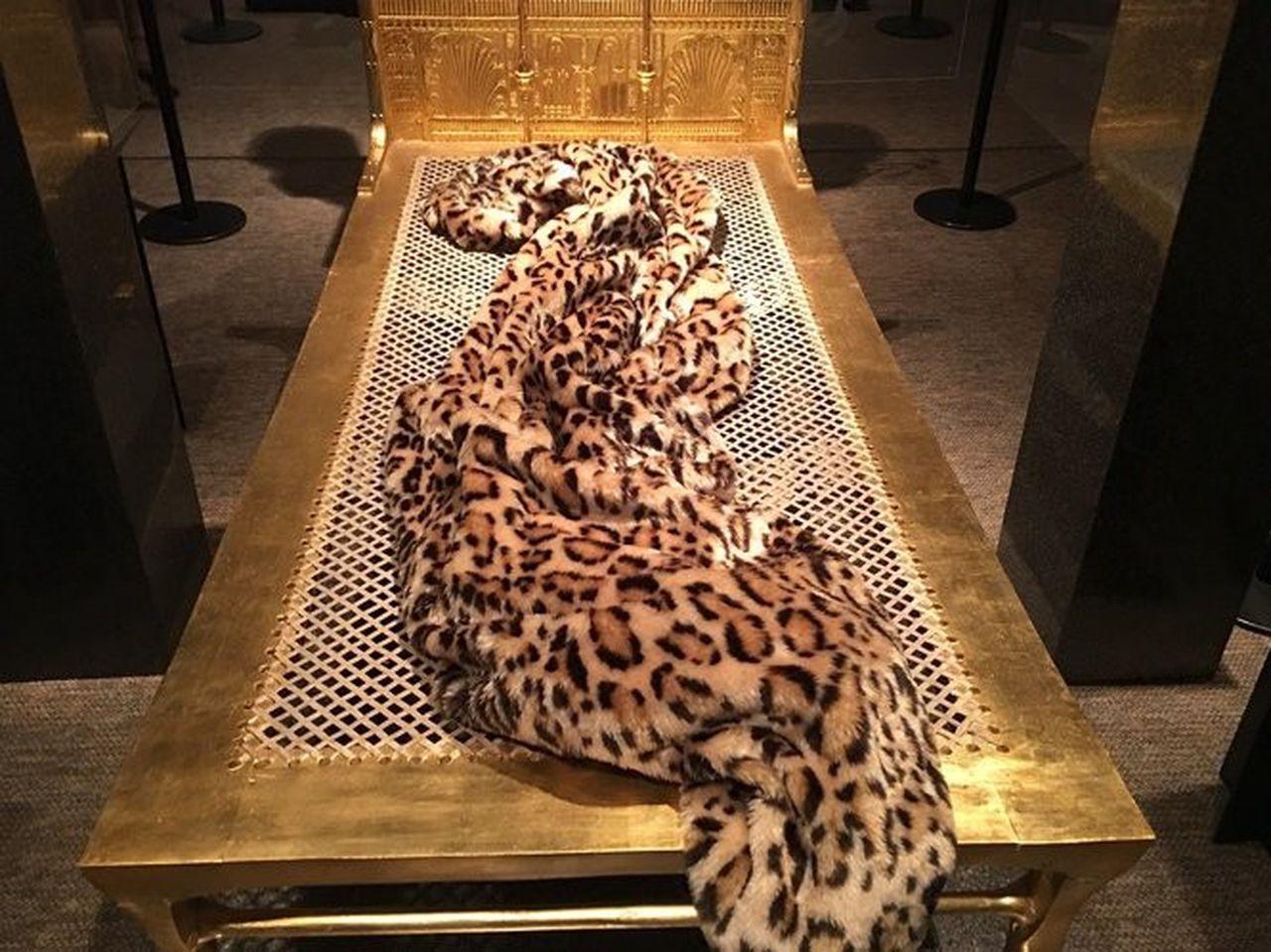
“Golden Bed – 18th Dynasty”
Of the six beds found in the tomb, the most spectacular was the pharaoh’s personal golden bed, recovered from the tangled rubble of the annex. The majestic structure is made of golden ebony with an elaborately woven mattress.

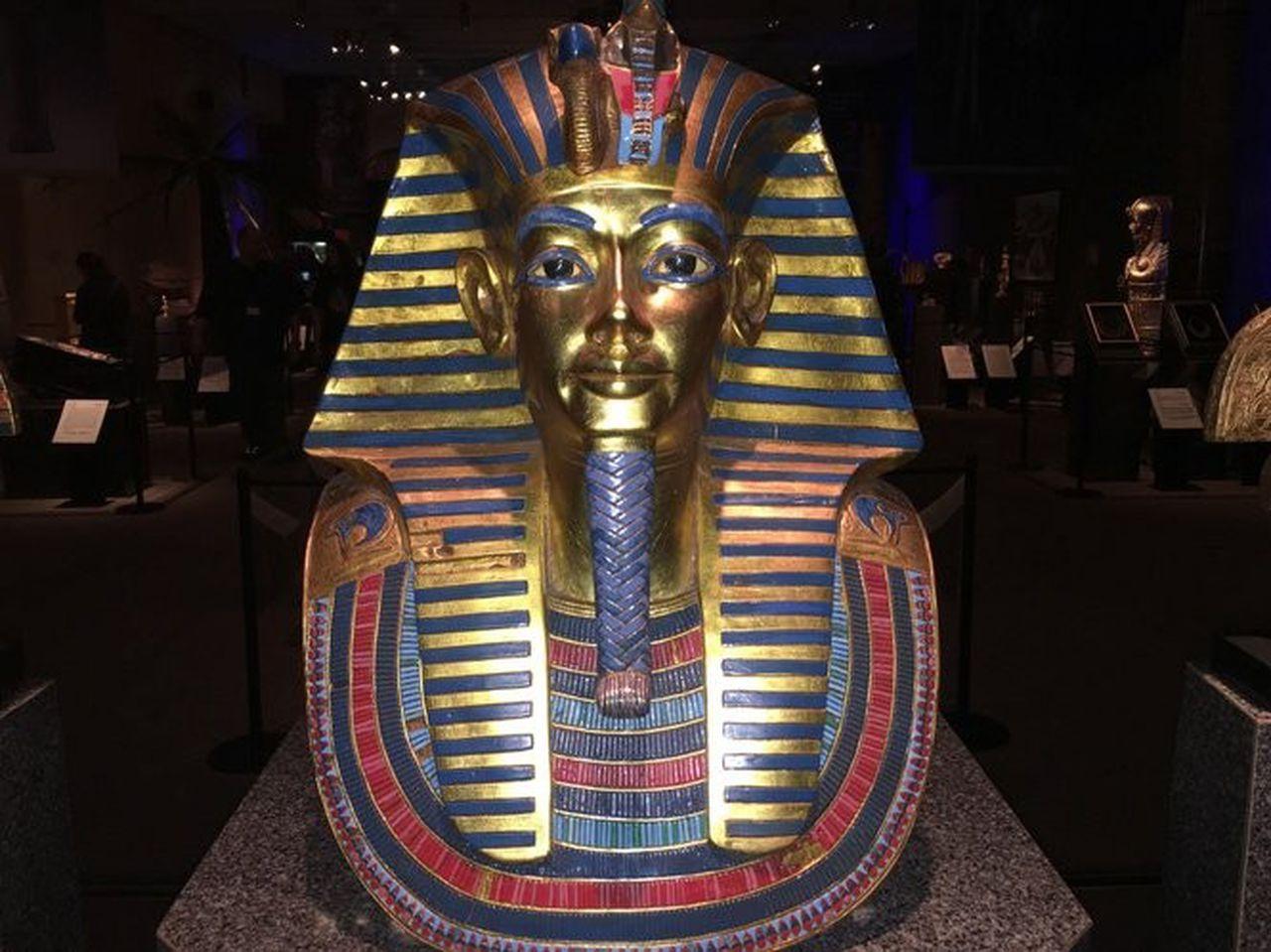
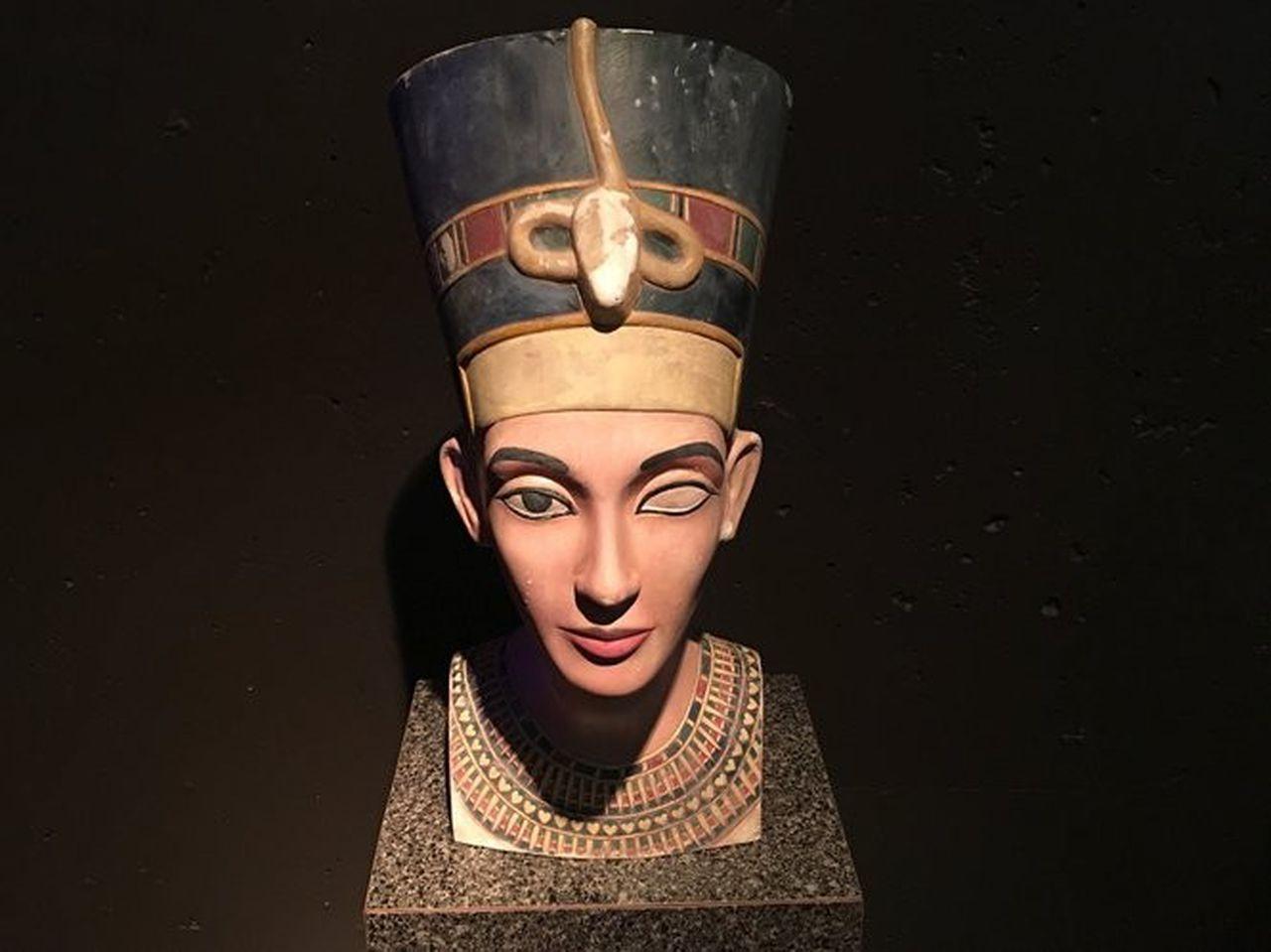
“Nefertiti – 18th Dynasty”
This painted limestone bust of the beautiful Queen Nefertiti was found in the workshop of master sculptor Djhutmose in El-Amarna, where it was used as an educational model, hence its unfinished eye.
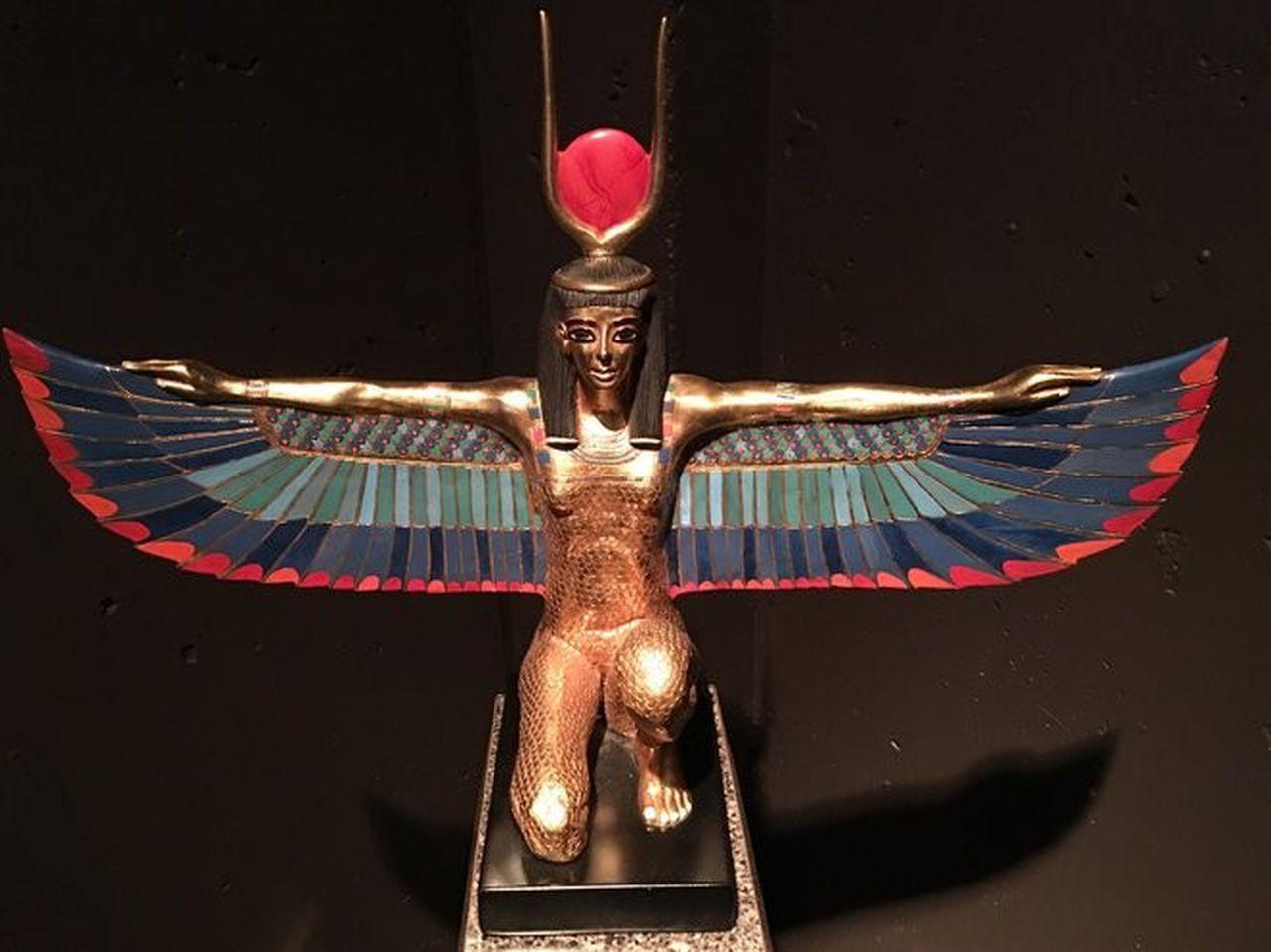
Isis in this context refers to the ancient Egyptian goddess and not the modern terrorist organization. Isis was a prominent deity in ancient Egyptian mythology, known as the goddess of magic, motherhood, and fertility. It was not associated with any terrorist activity.
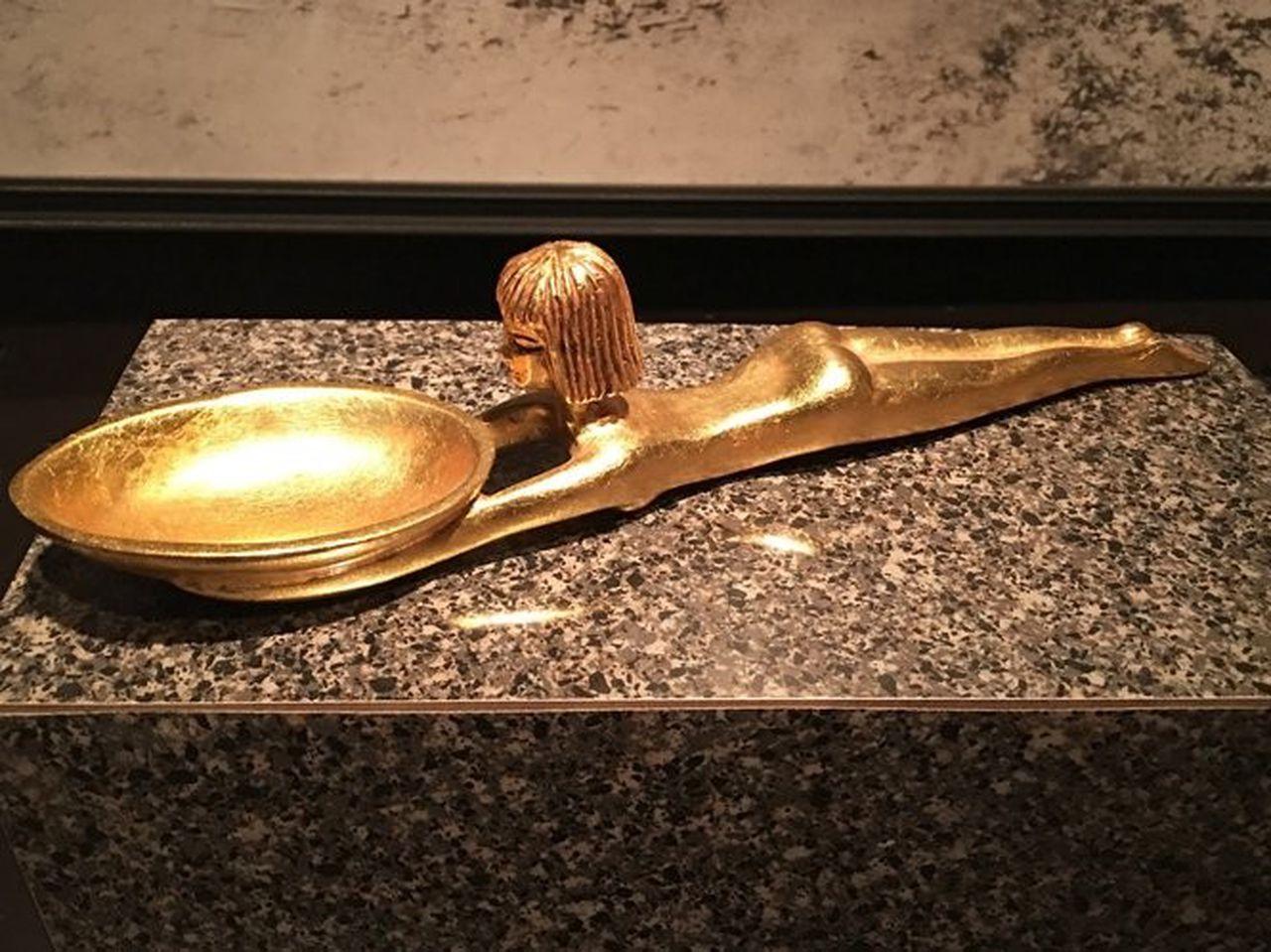
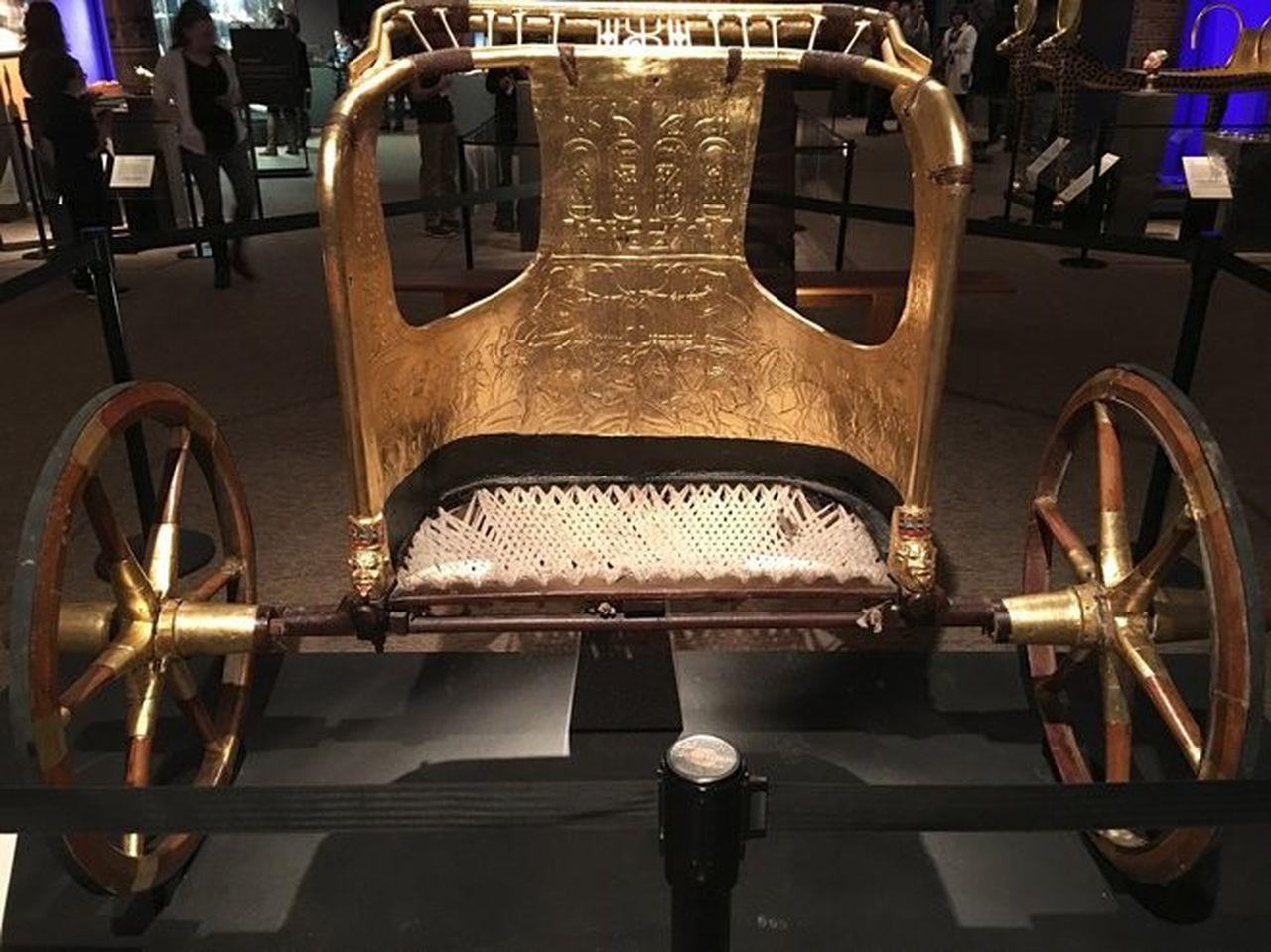

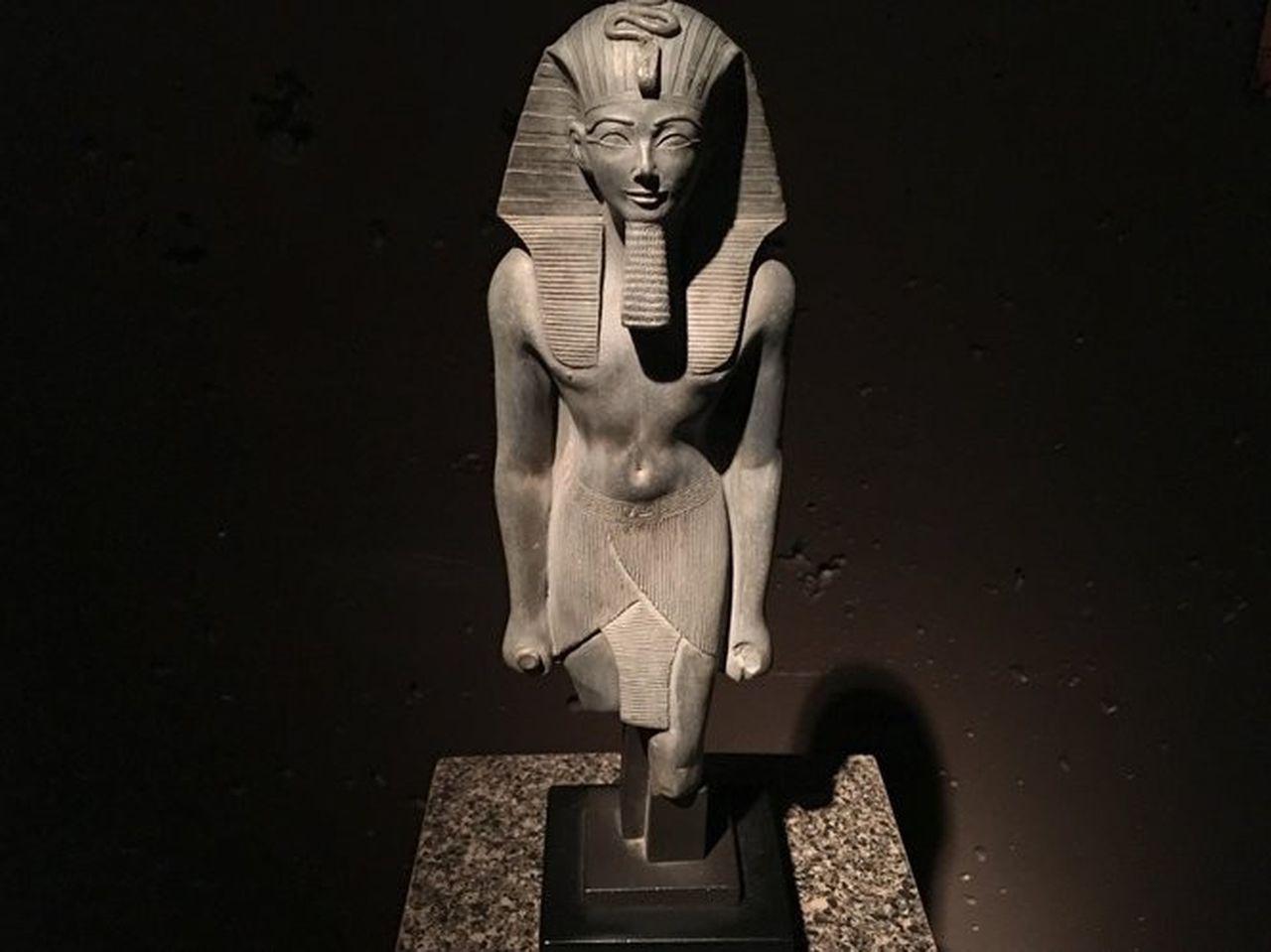
Thutmose III was one of the most powerful pharaohs of ancient Egypt. Throughout his reign, he orchestrated numerous military campaigns, establishing his name as one of the most formidable leaders in Egyptian history. Many of their conquests were made in regions such as Syria, Palestine, and Nubia, significantly expanding Egypt’s influence and dominance in the ancient world. Thutmose III’s achievements include isolating previously independent cultures and incorporating them into the Egyptian empire.
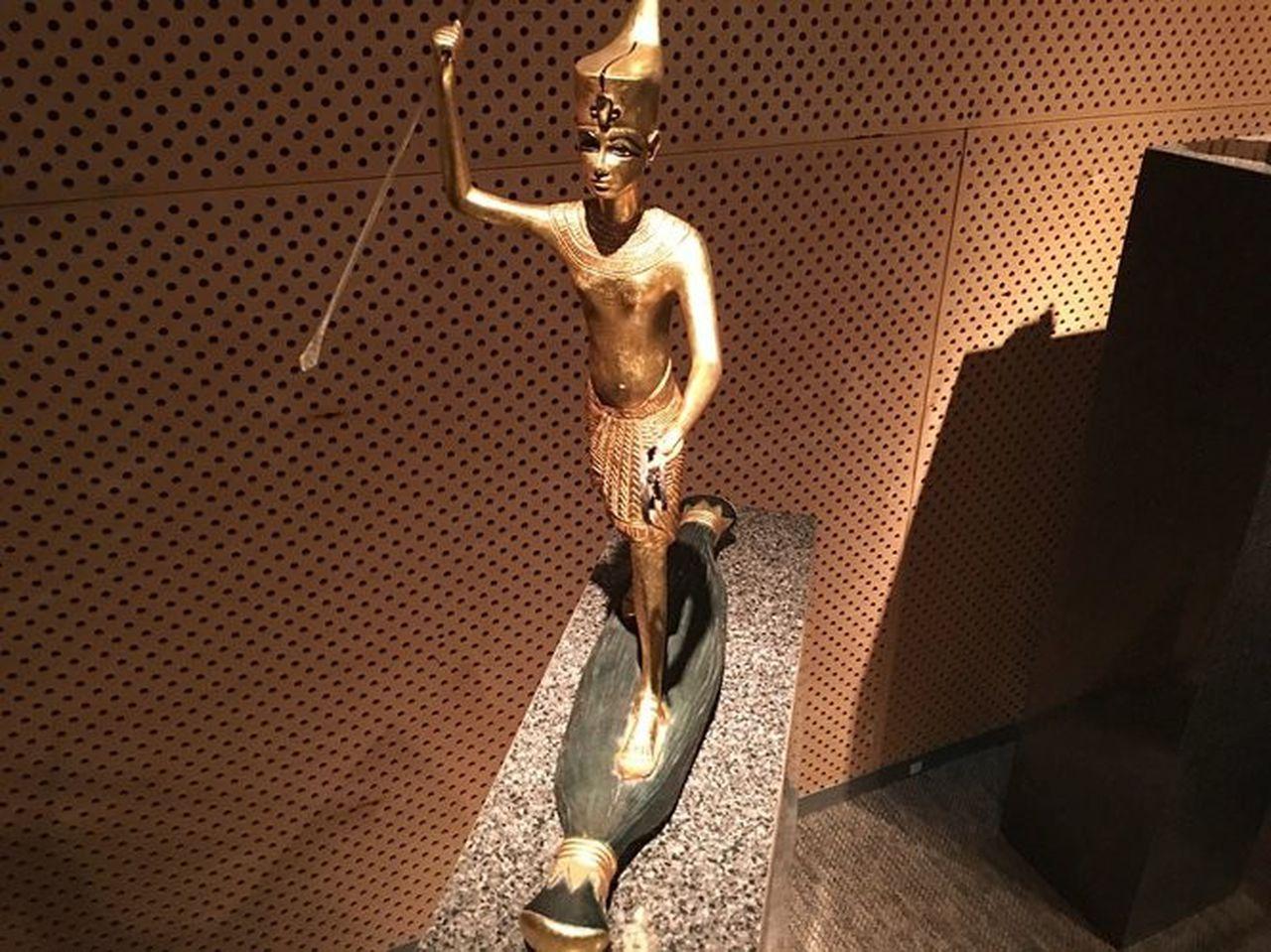

The statue of Tutankhamun with the god Horus reflects an important aspect of ancient Egyptian religious beliefs. In this depiction, Tutankhamun is shown wearing the double crown of Upper and Lower Egypt, symbolizing his rule over both regions. He is represented standing on a papyrus raft, a symbol of the sun god Ra’s journey through the sky.
Tutankhamun’s position on the papyrus raft with the god Horus signifies his divine connection and legitimacy as pharaoh. The god Horus, often depicted as a falcon, was associated with kingship, protection, and the divine right to rule. This statue shows Tutankhamun’s role as a ruler under the guidance and protection of the gods, ensuring the stability and prosperity of Egypt.
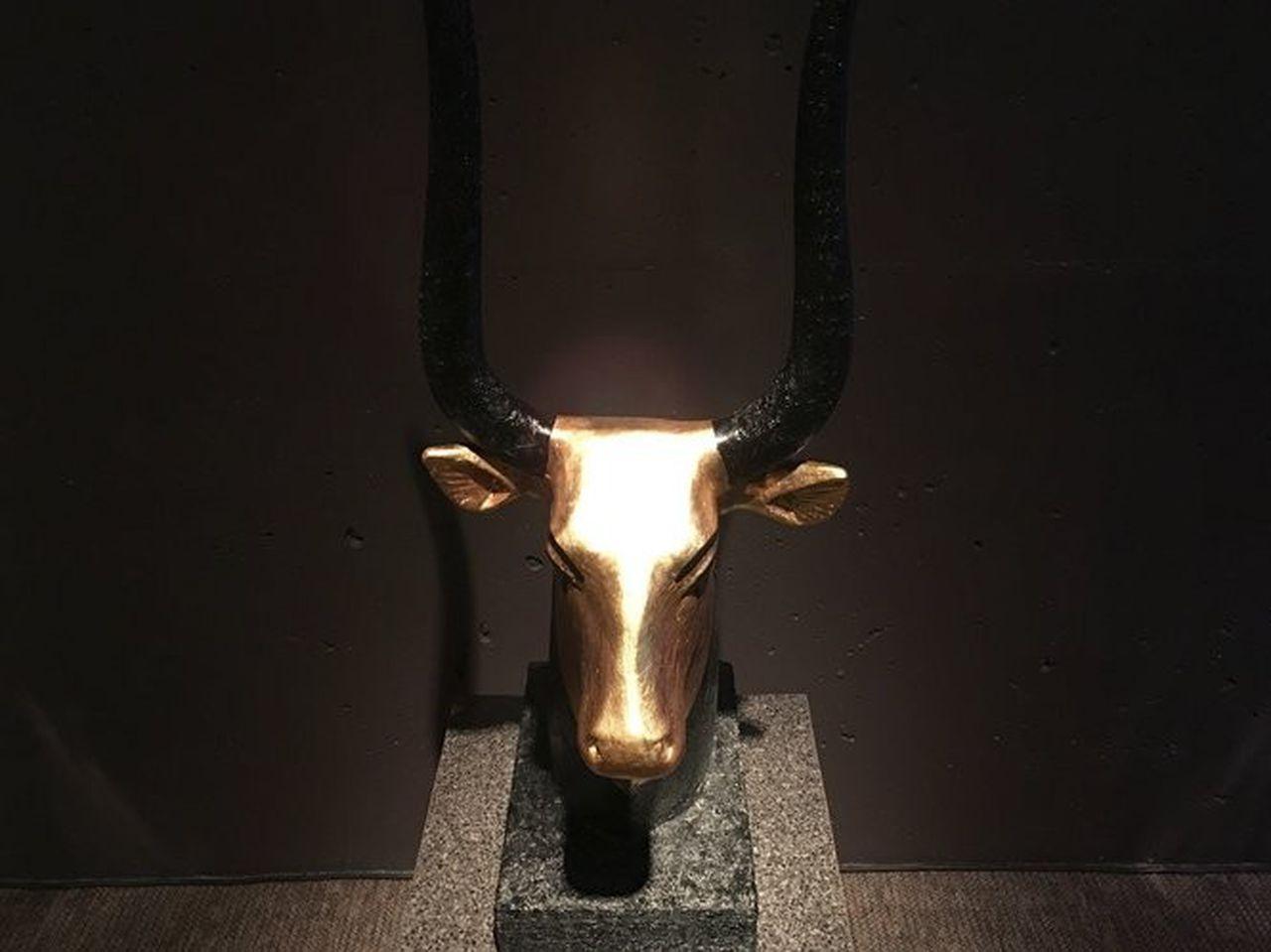
Hathor’s manifestation in the form of the divine cow, often associated with her role in ancient Egyptian mythology, is beautifully depicted in this gilded wooden votive sculpture found between the sanctuary of Anubis and the canopic sanctuary, with her face facing west. This particular form of Hathor as a cow has important religious and cultural importance in ancient Egyptian beliefs.
Hathor was a complex goddess with a wide range of attributes, including the goddess of love, music, dance, fertility and motherhood. Her depiction as a cow symbolizes her protective and protective qualities, making her a beloved deity among the Egyptian people.
This votive sculpture probably served as a religious offering, a representation of devotion and gratitude to Hathor for her divine blessings and protection. It beautifully captures the elegance and symbolism of ancient Egyptian religious practices, particularly in their reverence for the goddess Hathor in her various forms.
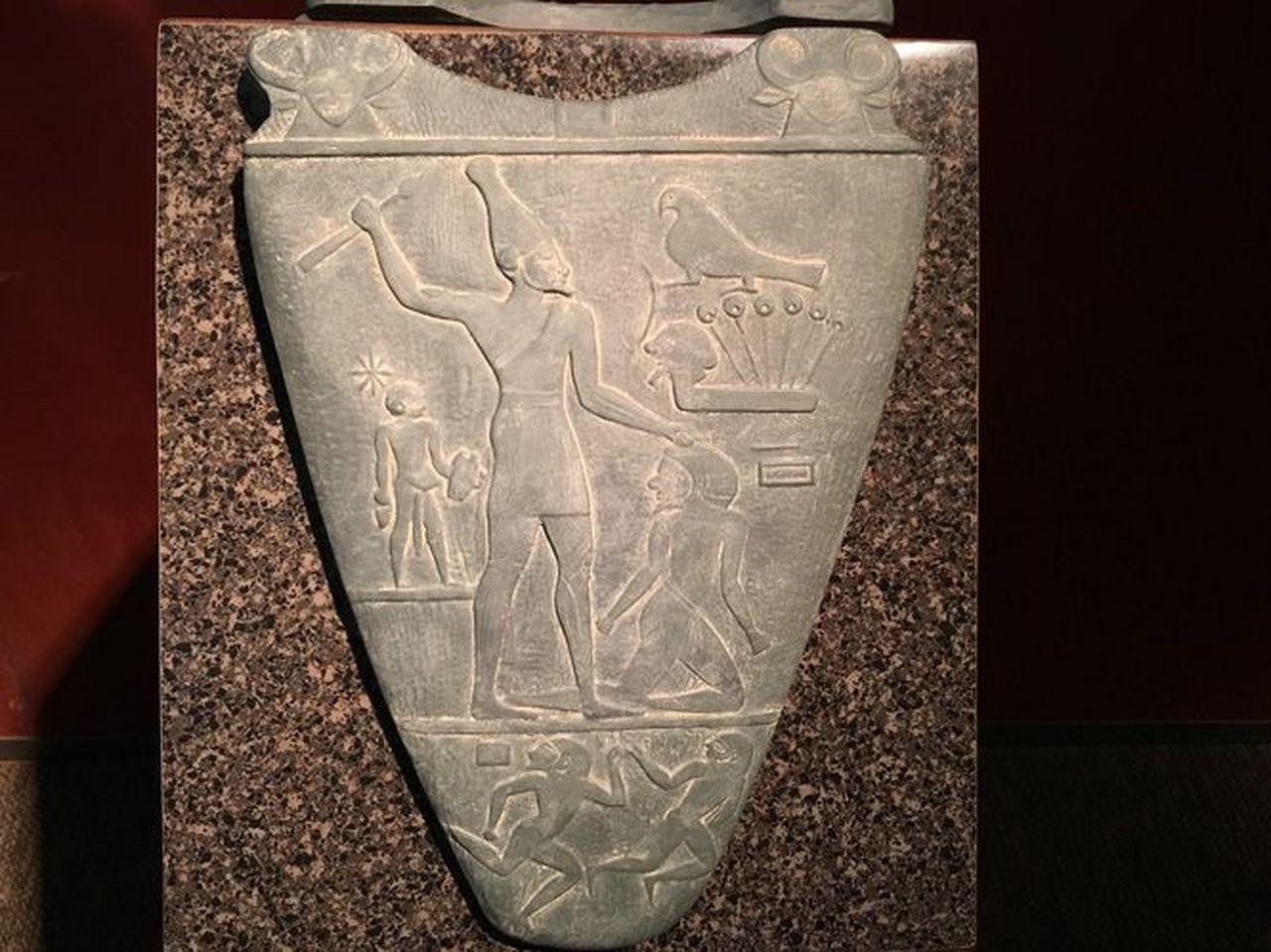
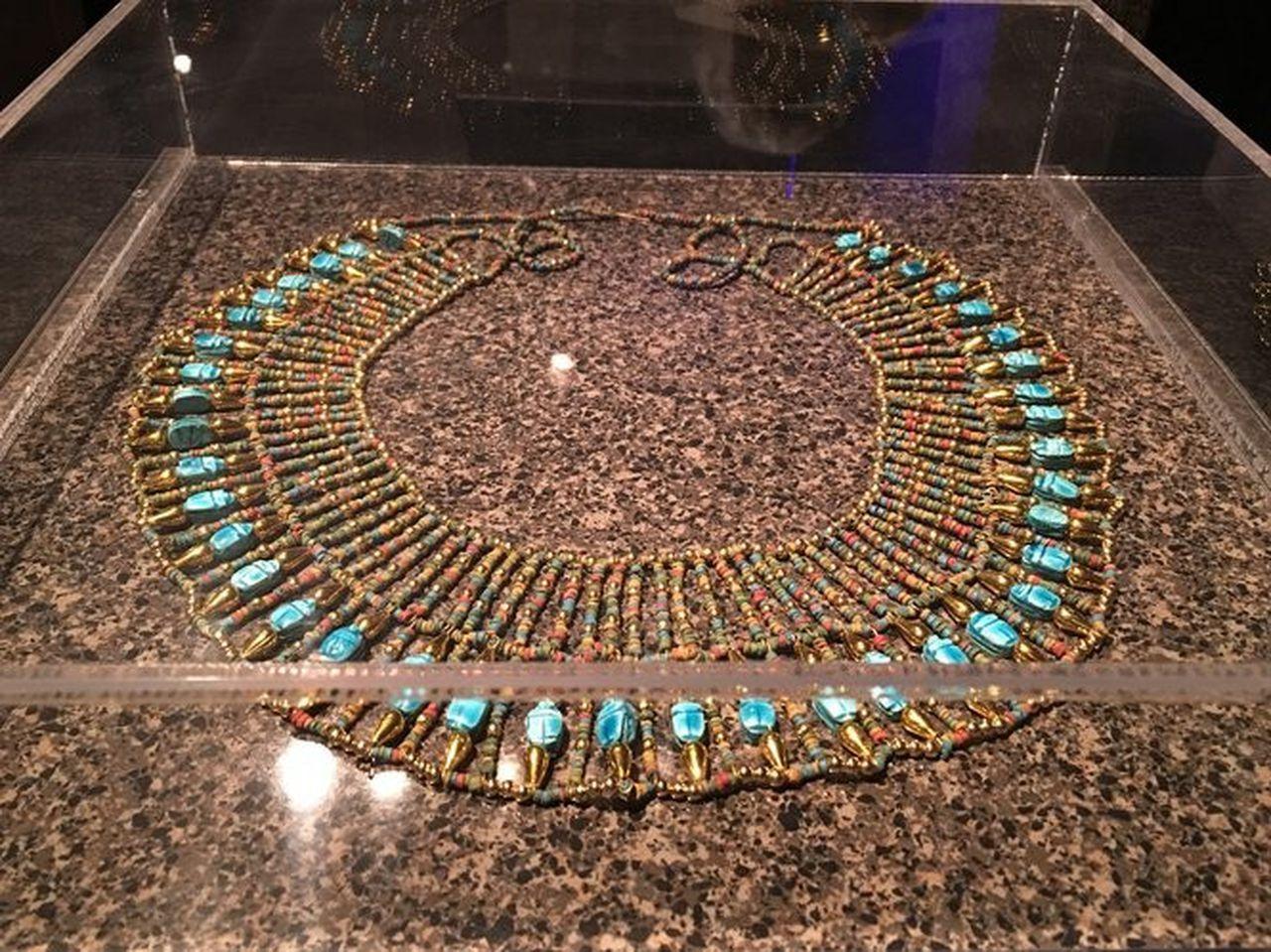
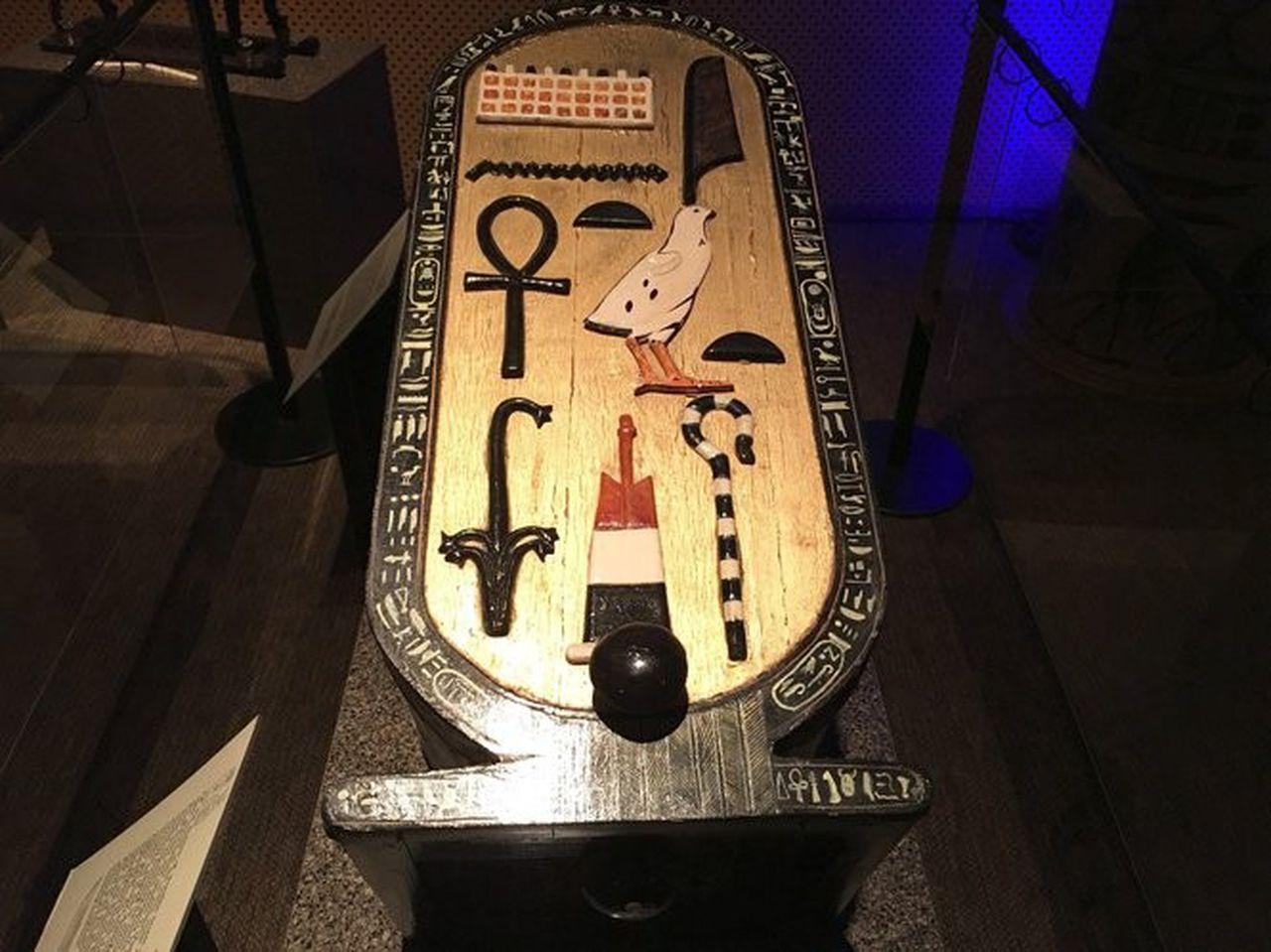


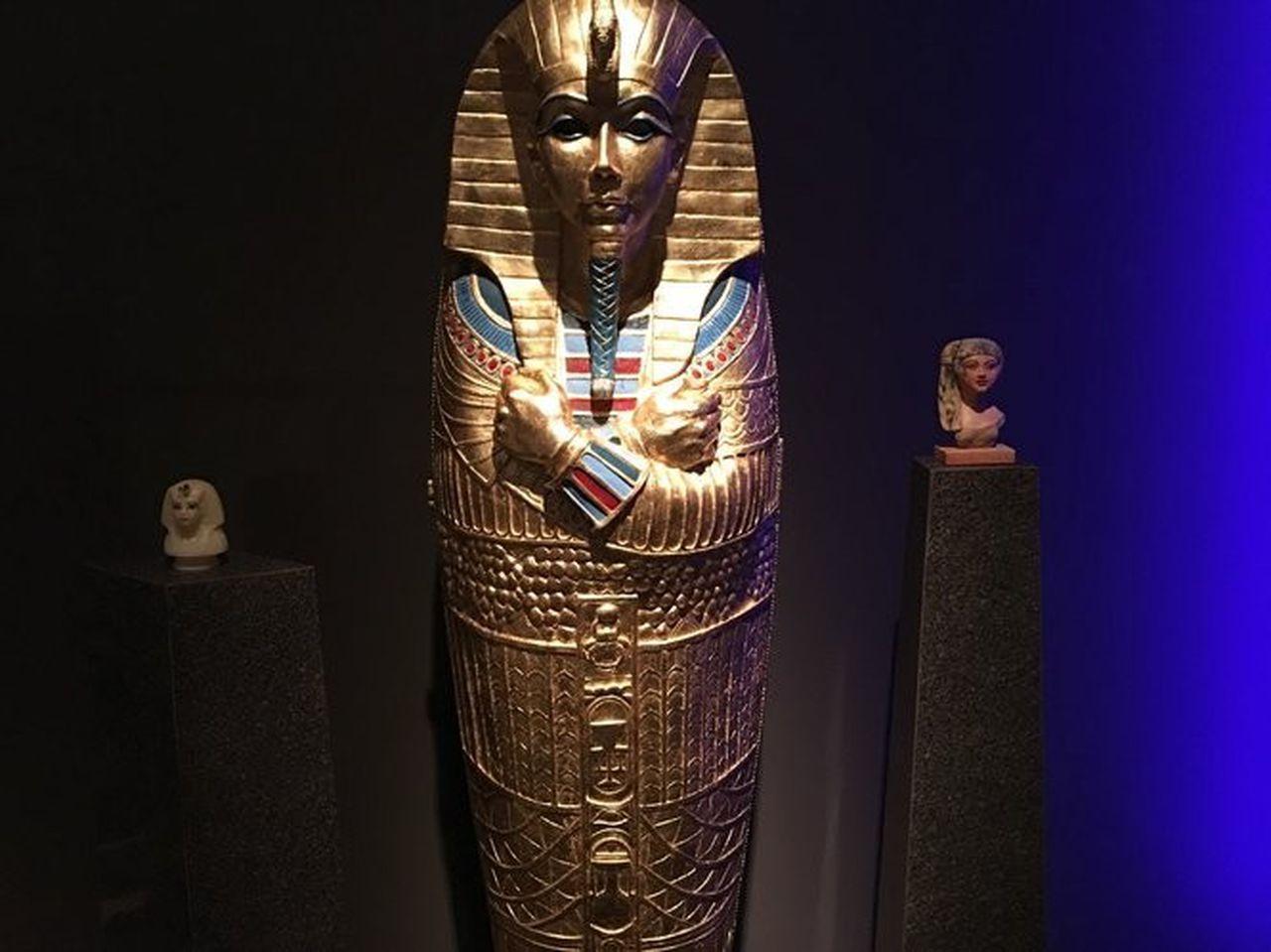
G𝚘𝚍𝚎n M𝚞mmi𝚏𝚘𝚛m C𝚘𝚏𝚏in – 18° D𝚢n𝚊st𝚢
